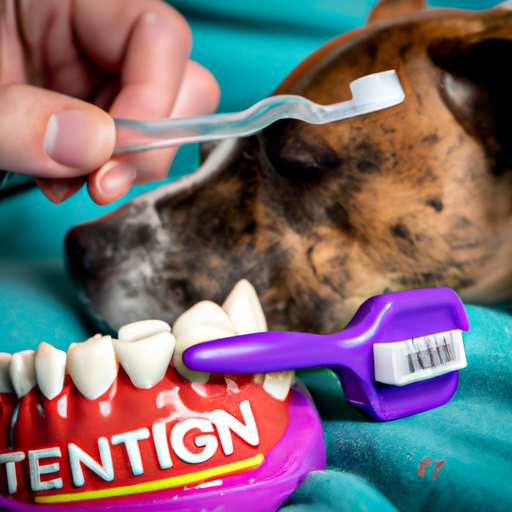When your dog’s gums are red and swollen, it may be more than just a minor irritation. Gingivitis, a form of gum disease, is a common condition in dogs. But don’t worry, you’re not alone in dealing with this issue. In the following guide, we will walk you through the steps to help your furry friend combat this condition.
H2: Understanding Gingivitis In Dogs
Gingivitis is an inflammation of the gums, often the first stage of gum disease. It’s caused by the buildup of plaque on the teeth’s surface. If left untreated, it can progress to periodontitis, a more severe form of gum disease that can lead to tooth loss.
Just like in humans, dogs are also prone to gingivitis. Factors like poor oral hygiene, diet, age, and certain medical conditions can increase the risk of developing this condition. Common signs include red, swollen gums, bad breath, and difficulty eating.
H2: Prevention Is Better Than Cure
Prevention is the cornerstone of your dog’s oral health. Remember, plaque buildup is the main culprit behind gingivitis. Here are a few preventive measures you can take:
- Regular Brushing: Brush your dog’s teeth at least two to three times a week. Use a canine toothpaste and a soft-bristle toothbrush.
- Dental Chews: Dental chews can help reduce plaque and tartar buildup. Make sure to choose one that’s appropriate for your dog’s size and dietary needs.
- Professional Dental Cleaning: Schedule regular professional dental cleanings with your vet. They can perform a thorough cleaning and check for any signs of oral diseases.
H2: Treating Gingivitis In Dogs
If your dog has been diagnosed with gingivitis, it’s time to step up the oral care. Here is a table that outlines the steps for treating this condition:
| Steps | Description |
|---|---|
| 1. Professional Dental Cleaning | Your vet will perform a thorough cleaning of your dog’s teeth and gums. This is done under anesthesia. |
| 2. Antibiotics | If there’s an infection, your vet may prescribe antibiotics. |
| 3. Improved Oral Care Routine | Enhance your dog’s oral hygiene routine. This includes daily brushing and the use of dental chews. |
| 4. Regular Vet Check-ups | Regular vet visits are crucial to monitor your dog’s condition and prevent the recurrence of gingivitis. |
H2: Essential Tips For Maintaining Your Dog’s Oral Health
Long-term management of your dog’s oral health is crucial to prevent the recurrence of gingivitis. Here are some tips:
- Choose a balanced diet that promotes dental health. Some dog foods are specially designed to reduce plaque and tartar buildup.
- Keep your dog hydrated. Drinking water can help rinse away food particles and reduce plaque buildup.
- Monitor your dog’s oral health regularly. Look for signs like bad breath, red or swollen gums, and difficulty eating.
FAQ
Q1: Can gingivitis in dogs be cured?
Yes, with early detection and proper treatment, gingivitis can be reversed.
Q2: How often should I brush my dog’s teeth?
It’s ideal to brush your dog’s teeth daily, but a minimum of two to three times a week is recommended.
Q3: Is gingivitis in dogs contagious?
No, gingivitis is not contagious. It’s caused by plaque buildup, not by a virus or bacteria.
Q4: Can I use human toothpaste to brush my dog’s teeth?
No, human toothpaste contains ingredients that can be harmful to dogs. Always use a toothpaste specifically designed for dogs.
Q5: Can my dog’s diet affect their oral health?
Yes, a balanced diet can contribute to good oral health. Certain foods can help reduce plaque and tartar buildup.
Being a caregiver to your furry friend may seem demanding at times. However, by understanding and implementing good oral hygiene for your pet, you can help them lead a healthier and happier life. And remember, when it comes to your dog’s health, regular check-ups with the vet are crucial. So, keep brushing, keep checking, and keep loving your dog.



